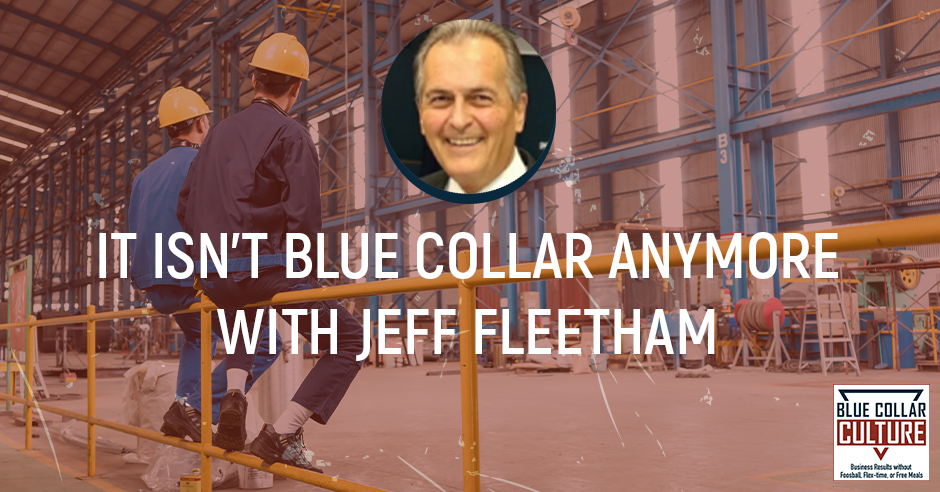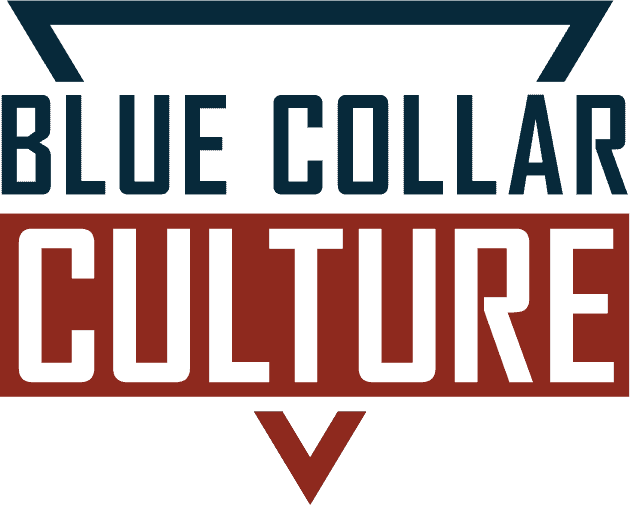
When it comes to the blue collar industry, many people tend to associate it as a dirty t-shirt, dead-end job with no career opportunity. But this is so far from the truth. In fact, many people who have grown up in this business have magnificent careers. Jeff Fleetham, the Director of Arizona Registrar of Contractors, greatly knows this to be true. In this episode, he joins Ryan Englin and Jeremy Macliver to dispel the greatest misconceptions and myths when it comes to construction and the trades. He shares how we can attract great young people to the industry, tapping into topics on education, construction science technology, and more. This isn’t blue collar anymore. Blue collar is what academic elites do to put people in their place. It’s time to break up this biased notion towards those who work in construction and the trades and shed a clearer and much truer light. Follow along to this conversation for more.
—
It Isn’t Blue Collar Anymore With Jeff Fleetham
I’m here with Jeremy Macliver.
I’m excited about our guests and hearing the way Jeremy has so much in common and much passion about the trades and blue-collar companies in general. Our guest was appointed by the Governor of Arizona to be the Director of the Arizona Registrar of Contractors. He is so passionate about bringing new people into the trades that he is involved with tons of grassroots initiatives and schools in and around the valley. I want to welcome the show, Jeff Fleetham, the Director of Arizona Registrar of Contractors.
—
Jeff, thank you for being on the show.
Thank you, Ryan. Thanks for asking me.
One of the questions we’d love to start with is to talk about some of the misconceptions about the industry. I know you’ve got a ton of thoughts and you’re super passionate about this. When it comes to construction and the trades, what is one of the biggest myths that you want to shatter for everybody?
When it comes to the industry itself, many people think it is a dirty T-shirt, no end, low brain power, and no career opportunity. It’s a fallback. If you can’t do anything else, you can go into the construction industry. That’s simply not the case. I grew up in the business. Other people have grown up in this business and have magnificent careers. There’s nothing about construction that doesn’t involve Science, technology, Math, and engineering. Any skill you can imagine is involved in construction, vision, art, and the whole thing. There’s a wide variety of areas you can go in. It’s only not being an electrician, a plumber, or a guy in a ditch. It’s a variety of different things. It’s an awesome way to drive down the street, look at something like I have done many years ago, and going, “My dad and I built that. That is an awesome thing.”
A blue-collar is what academic elites do to put people in their place. Click To TweetI love that you use that word technology when we start talking about this because there are so many people thinking, “Technology means I have to be a coder. I have to do computer stuff.” That’s not true. I was working with a client and they’re using robots to build bridges. It’s cool. These guys are still ironworkers and still in the trades but now they’re learning to operate these robots and apply technology to this. It’s amazing what they’re doing.
Ryan, those things have been going on for a long time. It’s becoming more apparent today that we see those things. In social media, you can see those kinds of things. I like to use the word Science as well. Science is an old word that means to know and technology is a new word that means to build. Thusly, that’s where I came up with construction science technology professionals because that’s what we are. We’re professionals.
Jeff, you couldn’t be speaking more of my language when it comes to this stuff. I love the passion. Honestly, we started having this before we even got onto this show. I’m looking forward to jumping into this. We talked about this, we talked about the words, and we talked about all of that marketing. I know you’ve been involved with AZBYF. I was involved with it from the beginning, going to a lot of the tours looking at that. You talked about some of those mindsets that are around hiring these young people. What do you think is the biggest thing that’s holding back the trades from attracting great young people to it?
I don’t think there’s one thing specifically. We do things that we think are the right things to do. One of the things we did with part of the AZBYF Effort was Arizona Commerce Authority, the registrar and once you start handling the material yourself and doing it. We talked a little bit about the visual understanding of what’s going on in a project that can only happen when you’re there.
It can only happen. I love that higher price education. Is that what you said?
I didn’t say it exactly that way. I don’t call it higher education. Personally, it is not. It’s other education. It is additional education. My one son-in-law is a pipefitter and during his training, it was online stuff with Purdue University. Had he gone four years to Purdue University, he would have had to come back out for four years to learn his job. However, while he was doing that, we call it Earn While You Learn. I mentioned to Jeremy earlier that my first job when I was a little kid was pulling nails and straightening nails but I also understood what nails do.

It wasn’t long after that I realized that a 2×4 on a bearing wall at sixteen-inch on the center only holds 1/55 of its total load capacity. Why would I need to know that? What’s the difference between a standard size footing and a monolithic pour footing? Why is one wider? Why is one deeper? All of those things are all Science and technology. Those are things you learn while you’re there. Am I going crazy, Jeremy? Am I doing okay?
You’re doing fine because we’re so passionate. I didn’t share my story but I was a straight-A student in high school who graduated as a junior with a 4.14 GPA and decided not to go to college. My teachers pulled me aside and gave me the dearest and sincerest pouring out of I was going to be a failure at life because I was choosing the trades. I was making over $100,000 by 23. I don’t think that’s a bad wage. My passion was in the trades. My skillsets were there. Understanding how all that stuff works, I enjoyed being around that stuff. I knew that the other education, as you called it, was not going to be the right one for me.
You and I are almost preaching to the choir here about it but so much of the marketing around this has been, “You’ve got to do this to be successful,” which you don’t. You and I both know that. We had plenty of people there. I would like to take this into the business world here a little bit. You’ve seen this. You and I are 100% aligned that we should be getting more people into the trades. What are some things that you’ve seen businesses do that you’re like, “That is spectacular to attract the right people in and to help get the youth in?” I know you serve EVIT as a board there.
A couple of different places. I’m on the school board at East Valley Institute of Technology. I am in the Advisory Council at Estrella out of West-MEC on several different boards or committees like that in workforce Arizona.
What are some things that you might have seen that you thought, “That is fantastic. That’s a great way to message to the youth and attract them?” What are some good stories there?
There are a variety of different things that I’ve seen that seem to create some excitement. One of the things that are fun is what we did on one of the construction career days. I’m not sure if you’re familiar with this. A few years ago, I was involved with that before I was with the register contractors with the Arizona building officials. In the first year, we were there. We showed hourly wages. Some of the kids looked at that. We started thinking about that and we started going, “Let’s talk about not how much you’re going to make now for an hour. Let’s talk about your career, what that means, and where you can go.”
Going to university isn't higher education at all. It's other education. It's additional education. Click To TweetWe put together storyboards of, “Here’s where you start and here’s how much you make per year.” That’s more impressive. When you tell somebody $20 an hour, they go, “Oh, well.” When you tell somebody $42,000 a year to a young person that’s 18 or 19 years old, stepping into this stuff, that’s a little more impressive. One of the things, Jeremy, you and I know this, if you show up, you’re ahead by 50% of your competition. Show up when you’re supposed to. If you’re supposed to start at 7:00, don’t be there at 7:15. Be there at 7:00.
Those were some of the things. We started doing that. The Build Your Future website and SkillsUSA uses that. A variety of people are using the total income and career path understanding. Everybody starts at the beginning but so many of our young people now, it’s not their fault. They haven’t been taught or told that you start at the beginning. You don’t start in the middle. We tell the true story. This is what you can do and this is where you can go. Think of this. When you’re in 6th and 7th grade, you think this is cool. You see this video by Arizona Build Your Future. It shows kids doing this stuff and it shows a guy that job site with the hand control controlling a drone or controlling some crane device. You see that and you find out, “I’ve got some of these skills already. Where do I go from there?”
It’s not everybody but more are doing that where they’re showing people those things. There’s a group that uses that in the Madison School District. They got some junior high kids and they let them build something every year. They paint it and they build it. They built dog houses or whatever but they’re showing them how to do these things. One of the things that we do as an industry that destroys us, and we say, “This is an industry for people who love to work for their hands.” No, it’s not.
It is for people who want to make a difference, who want to create, and build things. I don’t like working with my hands. I like seeing something, seeing a piece of dirt and going, “I want to build this thing here and this is where I need to go with it. This is what I need to do. I need to make the building square.” It’s Pythagoras’ Theory. Where does that all come from? All of those kinds of things and think about it.
I’ve got a question about that line of thinking. When I’m working with clients, my focus is entirely on helping them solve the number one issue of every construction, manufacturing company, and home service contractor in the country. It’s finding good people. That’s my entire focus. You said something that I thought was interesting. You started talking about, “We’ve got to let these kids know.” We’re talking about the kids of now. We’re not talking about borrowing a season guy from someone else. We’re talking about getting new people into the trades. You started talking about the money and how there’s some good money these kids can learn. I love how they can earn while they learn. They can get all this experience and have no debt. There’s a lot of benefits there.
You shifted gears and you started talking about this sense of purpose. I don’t build my hands, I build something. I drive by it and I go, “My dad and I built that years ago and it’s still there.” They’re excited about what they’ve built. I find that most companies struggle with this. They want to pay an extra dollar because that’s the only way they think they can get people to come to the trades but then on the other side, they’re like, “No, you need to think about this long-term. Think about getting to build the infrastructure of America.” There’s this huge sense of purpose. I find that those two things conflict with each other. We can either drive money or we can drive purpose. How do we reconcile that? How do we get people to dig deep into that?

It’s a multi-faceted problem. You can’t attack one side. You have to understand what you’re looking at. To be quite honest with you, some small businesses are small enough and they’re busy enough that they don’t have time. It’s almost like you don’t have time not to do it.
If you can’t get guys, you’ve got to put the time or you’re not going to grow your business.
We have to remember this is a private industry. Also, another thing is the shortage of the construction workforce is not new. It’s bigger. In the early ‘70s, my father and I couldn’t find anybody to work for us. All of a sudden, everybody was out of work. There was nobody. You’re either damned if you do and damned if you don’t. You’re either too many people or not enough people.
What’s the solution then? We talk about this. We’ve got that with the Workforce Initiative here in Arizona with the Greater Phoenix Chamber. We’ve got Build Your Future coming into Arizona. We’re going into the schools. We still have a shortage. People have been talking about going into the schools and getting the next generation into the trades for decades and we’re still here. What are we going to do?
I’ve got you, Ryan. Talking about something is not doing anything. You’re just talking about it. You have to take action. Here’s what happens. I might get muted by some of my team. Firstly, Ryan, the government isn’t going to fix it. The solution is at the front of it is teaching. Teaching kids how to code is a great thing but who’s going to build the building that they’re going to code in. A construction site technology professional. Going into a higher education place is good but who’s going to build this massive building that you’re in. A construction science technology professional. Who is going to do these things?
Those of us in the industry have to start talking to young people early but not everybody wants to do this. Not everybody ever is going to want to do this. We have too many people in the workforce to do the work, unemployment is going to be there and we’re going to have a problem. I’m starting to get a little circular here. In construction, once we got into the production of homes, one would think that would be the way it needs to go because that makes sense. You get into a production mindset and you do all these things. You bifurcate crafts. A carpenter isn’t what a carpenter used to be. The carpenter used to build your house. You get the mason to build the walls. The carpenter probably finished the concrete, did the other stuff, hung the drywall, and did all this stuff. You start bifurcating.
There's nothing about construction that doesn't involve science, technology, math, and engineering. Click To TweetWe don’t have carpenters framing houses. We have framers. We have a guy that lays out the framing and we have the guy that all they do is pull the nail at the end of the nail gun. That’s where the shortage is. That is not a skill position. That is Henry Ford’s wrench. We’ve got a few different things. We need a bunch of people to pull the trigger on the nail gun but we need to pay them enough to keep them there so they can learn more and they fill the void in that leadership role. We talk to the young people. That’s a challenge. That’s why I said you have to start at the school boards.
One thing I’m hearing that you’re saying, Jeff, and you dragged it to Ryan and me. I want to expand it to the entire audience reading here. We need to be active in the school boards. We need to be participating out there at the grassroots where this is coming up. I’d love to challenge all of our audience to go out there and to participate. I am active in it with running Arizona’s Welding Advisory Board and leading the SkillsUSA State Competition for Welding. I’m doing some of those things and being a part of these different advisory boards. It’s so imperative that these kids get to hear from real people that are having real success because for none of us probably reading, it’s not a big thing for us to believe that you can be hugely and wildly successful in the blue-collar space.
With that, I would love to dive a little bit deeper into how the ROC is affecting that. You’ve got a ton of great contractors. You’re attracting and holding them to a higher standard. I believe that the entire industry is rising to a new level that, quite honestly, the world has not recognized yet. You and I were having a little bit of discussion about the word blue-collar. To me, it’s a point of pride. I know, internally, we can say that but the rest of the world hasn’t quite seen that. I know the ROC has the big stuff that they’re doing. You’re running one of the most well-known ones in the country. Tell us a little bit about how you’re removing those barriers.
Thanks for asking, Jeremy. Firstly, the way it works is I’ve got an amazing team and you’ve met some of them. They’re an example of the rest of the crew. I’m overhead here. They’re awesome. I have a ton of experience in consumer products by mistake. In the mid-’70s, construction was bad. I took a part-time job that ended up twenty-plus years in consumer products but we learned a lot about customer service there. When I came to the Registrar of Contractors, my goal was to turn this into a customer service operation. Our goal was to find reasons to licensed people and let people know that being a licensed contractor in the State of Arizona is a marvelous career. We have a theory or a belief here that we’re going to find reasons to license people, not reasons not to license them.
We began on the task of taking a look at a variety of different things that were required to become a licensed person in the state of Arizona, from our application size to specific requirements about things. We started looking at some of these things and finding out whether they made a difference. Do we need to know this for you to determine whether or not you’re a qualified contractor? The answer to a lot of that stuff was no.
The timeframe for a small business person to get licensed at one time was someplace in the 3 to 4 months range. When you’re trying to start a business, that’s a long time. You’re trying to start a business so you can pay your bills and do those things. Jim brought this up to me. We were asking for financial statements. You’re a new business and determinations were being made that you didn’t have a whole lot of money in the bank, so you couldn’t get your license. You go, “Are you kidding me?” Decisions were being made about how you, Jeremy, could start your business by someone who had never signed the front of a check or never understood that. We start looking at those things from those ways and chipping away at those little burdens and barriers.

Trust me, there are licensed contractors and potential licensees that still don’t think we’re doing what we need to do but we’ve removed a lot of things. I’ll give you an example. When I first got here, one of the things that hit my desk almost immediately in the first week was denial for a young man who wanted to get his landscape license. Everybody seems to be a kid to you when you’re older, this young man was in his late twenties and he had had a DUI when he was nineteen. A couple of years before and his license was denied because of that. Here’s what’s interesting.
Statutes say that we could deny a license for felonies, not for something that you did years ago. We started looking at those things. That didn’t make any sense. We license about 80% and close to 85% of felons that have applied for licenses here. I’m going to probably get into some area where some people don’t like it, and that’s okay. There are six felonies. Years ago, there only used to be three. Some of these felonies are for minor things that get piled up. In America, you’re not guilty for the transgressions once you pay your debt to society and these are people that we are able to get licensed. I’m going to go on and on about some of these little things like that.
There are a couple of things that you’ve said in this that resonate. First of all, you acknowledge you had a great team. Partially, we wanted to have you on the air because we knew that you had a great team. I work with a lot of companies helping them to get more out of their people. Ryan helps them get more people. I help them get more out of their people. When they’re not getting enough from that. They’re not as efficient and not profitable but a lot of that has to do with how they’re leading that team, how they’re delegating, and managing all of that. Like everything else in the world, construction and the trades have got so much more competitive. The stakes are so much higher and customer service is a critical thing.
I was GC in a job and we had a superintendent out there. We recognized fast if we had made a bad subcontractor hire or not. It was simple. The first day that sub showed up at the job site and the crew jumped out, looked around and within about two minutes, we could tell you if we had a bad sub or a good sub. That foreman will walk up and say, “I want to get the lay of the land. The materials aren’t here. That’s weird. Let me call the office.” We have a good sub. If they’re like, “The materials aren’t here. They’re a bunch of clowns.” They go on cussing and we’re like, “We’ve made a bad sub.”
Customer service starts all the way at the top of how we’re taking care of our team and how we’re building a culture. When we start building that momentum, I see it started attracting a lot of great people to that because great people want to work with great people. One of the reasons I want to call out to the audience that we wanted to have you on is we noticed that our clients are knocking out of the park. We took the ROC, their licensing, and took their certifications seriously along with everything else that they were doing in their business. It raised our respect for the ROC in what they’re doing.
As we look to raise the blue-collar world and the image of what it is, we realized that the ROC and what you’ve done to put customer service into it, build a great team, support it, and find ways that enable successful entrepreneurs that have a scientific construction mindset to enable them to go out and do something, that’s what we’re looking for. It’s been an honor having you here. I know that you guys have a cool project. We’re excited to share with the team and everybody is reading out there. I’d love to hear a little bit as we bring this to a wrap-up here about the Hard Hats Contest that you got going because that is cool.
Customer service starts all the way at the top of how we're taking care of our team and how we're building a culture. Click To TweetWe had to cancel a few things that we had set up. We had a deal set up with the Diamondbacks and dozens of companies that were going to participate. It was a career fair at Diamondback Stadium that was all set up for baseball and COVID hit. We had to cancel that. We’re involved in a variety of other things that we had to cancel. The team, Breanna being part of it, and Jessica here, we’re all talking about some things. They came up with something to get the young people at least get a little bit of juice as well. They came up with this Hard Hat design. That’s not a big deal. Maybe it’s not a big deal. I don’t know, but it’s pretty cool.
Any kid, 9th grade to 12th grade, can participate in the ROC Hard Hat design, they can go to our website ROC.az.gov and there’s a Hard Hat link there for the Hard Hat contest that gives the requirements and the rules for it. We will pick from that and we’ll pick up the top ten. We’ll do that at the office and we’ll put it on social media for the social media to vote on it. Breanna came in and they came up with an idea over the holidays. They came up with a gingerbread house thing. The deadline for this is April 5th, 2021. That’s one thing to keep a little bit of what this is in front of the kids now that perhaps aren’t in C10 and J10. Maybe they’ll get a look at the registrar site and they’ll take a look at that.
I want to thank you for letting me here. You mentioned something about great careers. One of the best things that helped me here was using Collins’ book, Good to Great, that we use in our career here to get everybody started. It’s also a book on trust that any business person in construction should have as well. I’m not sure how many audiences we have when we talk about those things but we try to pass on any gem that we have during our contractor forums. We have contractor forums for people who are wanting to become licensed. We have forums for brand new licensees and we have ongoing forums for licensees. These forums are where we add new Q&As. We’ll give updates on the registrar and we’ll open it up for free flow questions.
Everybody should be joining. How do we register for those?
If you’re a licensed contractor in the State of Arizona and you provide your correct email, you’ll be getting an email from us to notify you about that. You’re notified when those are and everybody is welcome to sign up. That’s where you’ll get an update on what’s going on with the agency. We’ll open it up and answer the questions that we can. If there are some things, we can’t answer in an open forum like that, we will connect the participant with the proper department head and they’ll get an answer.
Thank you so much, Jeff, for being with us. I know your time is highly valuable and highly requested, so we’re honored to have you with us. For everybody that’s out there reading, make sure that you encourage the students to go out and compete against the Hard Hat thing. Join what the ROC has going on because we all know that we’re passionate about raising the bar and raising that to the next level. Thank you all for reading. Thanks, Jeff, so much.
Thanks for having us here. Thank you, Jeremy. Thank you, Ryan. Thanks, everybody.
Mentioned in this episode:
- Arizona Registrar of Contractors
- Jeff Fleetham – LinkedIn
- AZBYF
- SkillsUSA
- Arizona Build Your Future
- Greater Phoenix Chamber
- Hard Hats Contest
- ROC.az.gov
- Good to Great
About Jeff Fleetham
 Governor Doug Ducey appointed Jeff Fleetham as Director of Arizona Registrar of Contractors (ROC) effective February 9, 2015.
Governor Doug Ducey appointed Jeff Fleetham as Director of Arizona Registrar of Contractors (ROC) effective February 9, 2015.
Prior to his appointment, he owned 12-88 LLC, a residential project consulting and dispute resolution company, licensed as a B-3 General Residential Remodeling Contractor. His background includes construction, consumer products, consulting, and dispute resolution in both public and private sector industries. Director Fleetham also worked as an investigator with Arizona Registrar of Contractors from Jan. 2007 to Sept. 2013.
Director Fleetham’s background in the industry has made him an enthusiastic proponent of cultivating the industry for future construction science technology professionals. To that end, he proudly serves as Governing Board member of District #401 of East Valley Institute of Technology School District (EVIT); is a member of the Energy and Industrial Technology Advisory Council of Estrella Mountain Community College Energy Institute and Arizona Department of Education’s Construction Advisory Council (ADE-CTE / ACTEAZ); is a Steering Committee member of Arizona Construction Career Days (ACCD); and serves on the Greater Phoenix Chamber Foundation’s (GPCF) Construction Workforce Collaborative.
He actively serves on several councils and boards, including on the Board of Directors for the National Association of State Contractors Licensing Agencies (NASCLA); is a member of Arizona Building Officials (AZBO), where he was named Member of the Year 2013/2014; serves as a board member and Performance Excellence Committee member of the Governor’s Workforce Arizona Council; is a member of the Central Arizona Chapter of the International Code Council (ICC), where he holds multiple certifications; is a member of the National Federation of Independent Business (NFIB) and Arizona NFIB Leadership Council; and of the National Association of Bunco Investigators (NABI).
Director Fleetham came to Arizona when his father moved the family and business from Oregon in 1959. In 1962, Fleet Construction was founded and licensed in the State of Arizona until 2015. He attended Tavan grade school and graduated from Arcadia High School in 1970. He has three children and four grandchildren.
